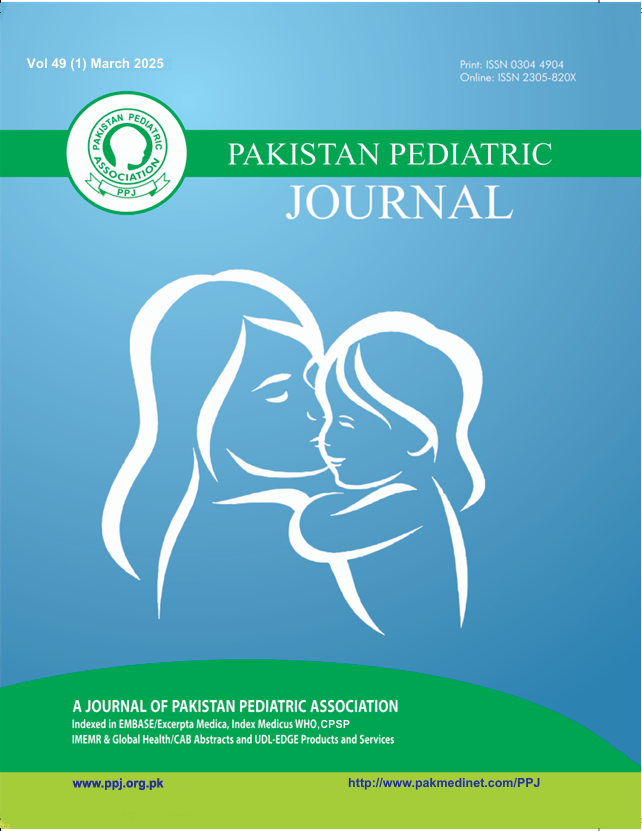The role of body temperature on resporatoruy rate in children with acute respiratory infections
Abstract
Background: Acute Respiratory Infections (ARIs) are among the most common illnesses in children and are a leading cause of morbidity and mortality worldwide. Understanding the physiological responses, changes in respiratory rate and body temperature, is crucial for effective management and treatment of these infections.
Method: It is a cross sectional study conducted at CMH Lahore from May 2023 till May 2024. After screening, 214 patients were included in this study. Body temperature and respiratory rate were recorded upon presentation, then every 6 hours for 24 hours. Data was entered and analyzed using SPSS 24. It was presented as mean, standard deviation, and percentages. P-values of ≤0.05 will be considered statistically significant.
Result: The study included a total of 214 children with acute respiratory infections, with an average age of 22.6 ± 17.9 months. Among the participants, 60.28% (129) were male and 39.72% (85) were female. At the time of presentation, body temperature was 37.5± 1.8°C and respiratory rate was 38.7±11.5 breaths per minute (bpm). Six hours later, the body temperature slightly decreased to 37.1± 1.1°C, with a decrease in the respiratory rate to 36.3± 10.2 bpm. By the 12-hour mark, the body temperature had increased to 37.9± 1.9°C, and the respiratory rate raised to 39.1± 9.5 bpm. Finally, at 24 hours, the body temperature was 36.5± 0.6°C, and the respiratory rate further decreased to 27.1 ± 6.2 bpm.
Conclusion: This study highlights the significant role of body temperature in influencing respiratory rate among children with acute respiratory infections
Key words: body temperature, respiratory rates, acute respiratory infections


